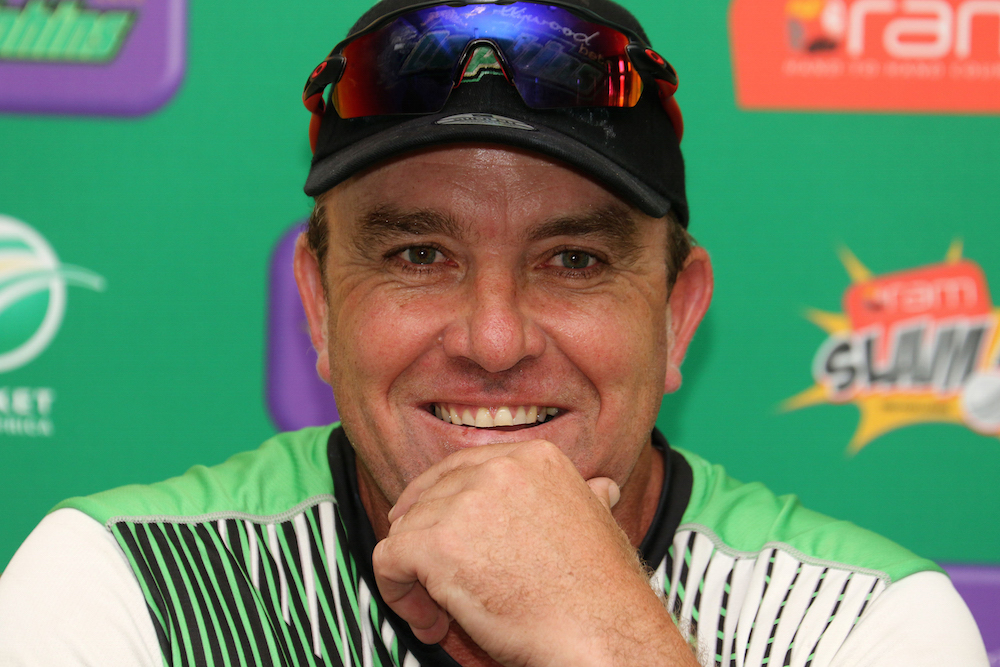Despite having plenty of experience, Dolphins coach Grant Morgan hasn’t been considered for higher honours. He shares his story.
How did you get into coaching and what inspired you?
I went to a weak primary school so I was one of the stronger players there. But as I went to high school, even though I was a leader and played SA Schools, I wasn’t always the best player in the team. I always felt the need to help, though. In varsity when I was working as a waiter and barman, I started helping kids in primary school. Then their parents started noticing that I was actually good at it. Before I knew it, I had 10-12 kids coming to me and I made money that way. It evolved from there.
What has your journey as a coach been like?
The first coaching job I got was at EP cricket in 1992-93. Shafiek Abrahams and I did the coaching school there, I was the batting consultant for the age-group teams. We worked in Grahamstown and Transkei setting up coaching clinics. Then I went to the Northerns academy, Northerns for seven years, then Holland, followed by TUT, Pretoria Boys High, Tuks and then to the Strikers, followed by Royal Challengers Bangalore in the IPL. After that, I started a business in Joburg. I was getting disillusioned because I wasn’t getting any of the bigger jobs and I had been around for so long and did so well by winning trophies and leagues everywhere I went.
What are the biggest hurdles you overcame?
I couldn’t kick on to get an assistant role at the higher level. I saw so many guys who were working under me jump ahead into SA U19 positions. No matter how many trophies I won with my teams; I just couldn’t get to the next level. I’m not bitter about it. I had a happy life coaching. I focused on enjoying it. Every team I coached was my World Cup.
You were successful during your time as KZN Inland coach. What sort of techniques and strategies have you carried over into your role at the Dolphins?
From being regarded around the country as strong technically, I started evolving. I used incentives, charts, challenges, catching schemes and happy hours. For instance, I negotiate R100 000 with my CEO when I take over a team, I use that through the season for incentives. It works out to about R5 000 a guy. If the CEO doesn’t give it to me I take it off my salary. For example, I have a happy hour where the next guy to take a wicket gets R100, R20 for a maiden and it goes up for every dot ball thereafter. If you are trying to save the game you get R5 a ball if you stay in. Double-meal money if you’re the leading run-scorer and Man of the Match caps. I have something called the ‘Blue-collar worker’, where I had an overall created by Hollywoodbets where the guy who does the most work for the team, will wear it at the airport and won’t pay for any of his stuff at the airport. It sounds like I’m buying my team, but the players buy into it, you can see it in the dressing room there is always a buzz happening. Sounds crazy hey? [laughs].
What experiences from your playing days have you carried into your coaching career?
I never gave up, always wanted to get better and I put the team first. There was something my coach Colin Bland told me, ‘You never leave a day of cricket or at work the same, you either leave a little bit better or a little worse’.
Your side shared the One Day Cup with the Warriors. Are you disappointed there wasn’t an outright winner?
Yes, of course. Everybody wants to have the ultimate feeling that you have won it. Three of the last five of these trophies has been shared. The way we justify our position is that in the head-on battles during the competition, we beat every team.
You’ve seen the likes of Keshav Maharaj and Andile Phehlukwayo come through the ranks and make it into the Proteas XI. What does that do for your confidence as a coach?
Keshav is a brilliant player. He has taken to the higher level of cricket like a duck to water because he has played his dues so well. Phehlukwayo has been a young sensation and has shown his potential. It gives our squad a lot of confidence.
Your captain Khaya Zondo made his Proteas debut against India. How do you think it went?
He had not been as dominant this season as he had been the previous year. With us being totalled by rain in the T20 he did not have as much opportunity to get stuck in. He has become a player who quietly creeps up on you and before you know it, he suddenly averages 43. I feel he looked comfortable and showed an ability to absorb pressure and put the ball away. When he scored the fifty, he showed an all-round ability.
Your side fielded three spinners in the Momentum One Day Cup final – Senuran Muthusamy, Keshav Maharaj and Prenelan Subrayen. Is there a problem producing top-quality spinners elsewhere in the country?
I think we are producing top-quality spinners. But you have to line up the spinners correctly to get the most out of them. Our spinners can’t be analysed by the last ODI series and T20Is against India because they need to work in a balanced bowling attack. We had quite a few injuries. We are producing a young attack in ODI cricket. Lungi Ngidi, Kagiso Rabada and Junior Dala are still learning. A spinner needs runs on the board and has to operate in a balanced attack. We were also bowling to the best players of spin in the world. We shouldn’t be overly critical.
Read SA Cricket magazine
Interviewed by Khalid Mohidin
Photo: Anesh Debiky/Gallo Images







